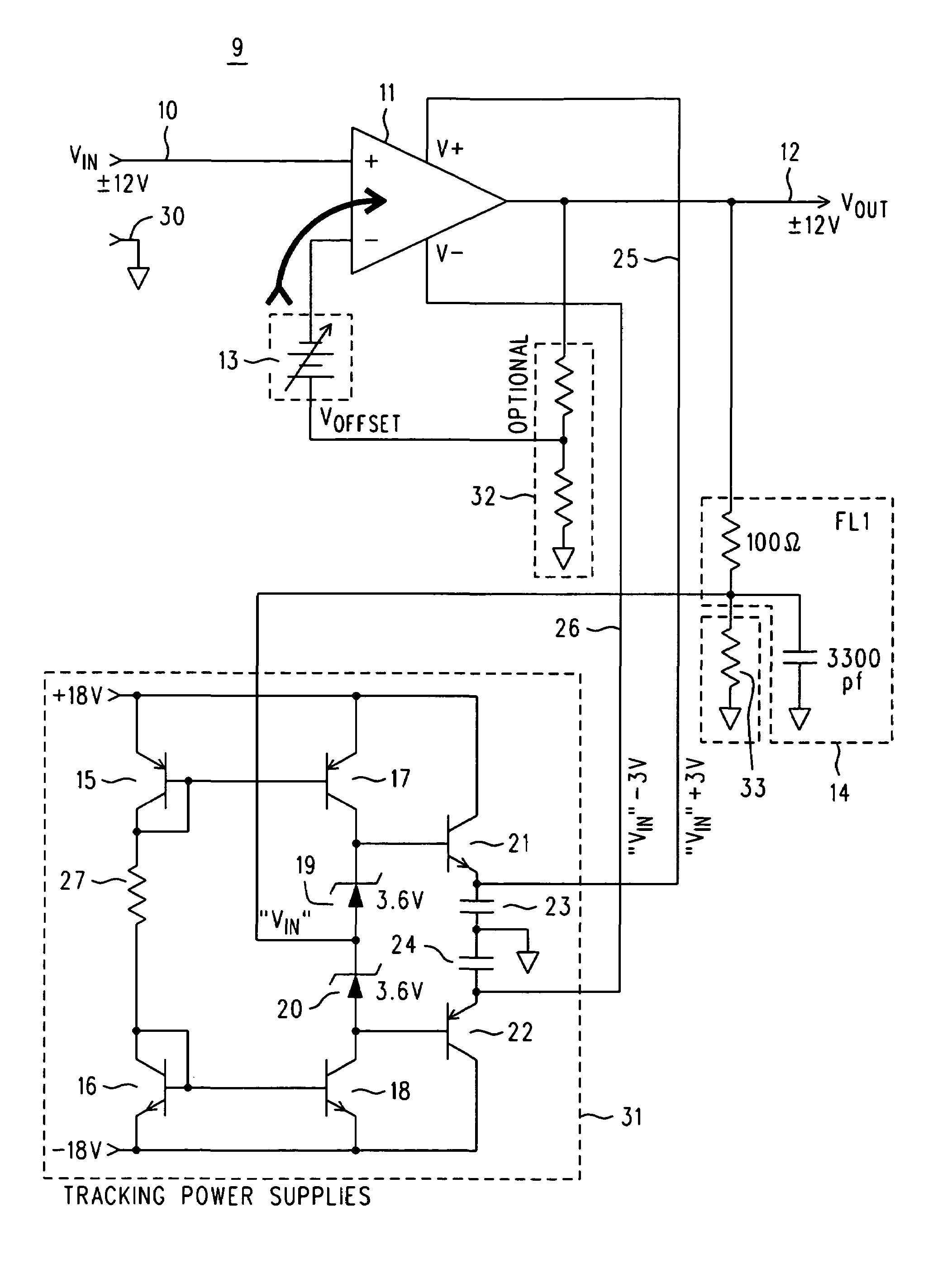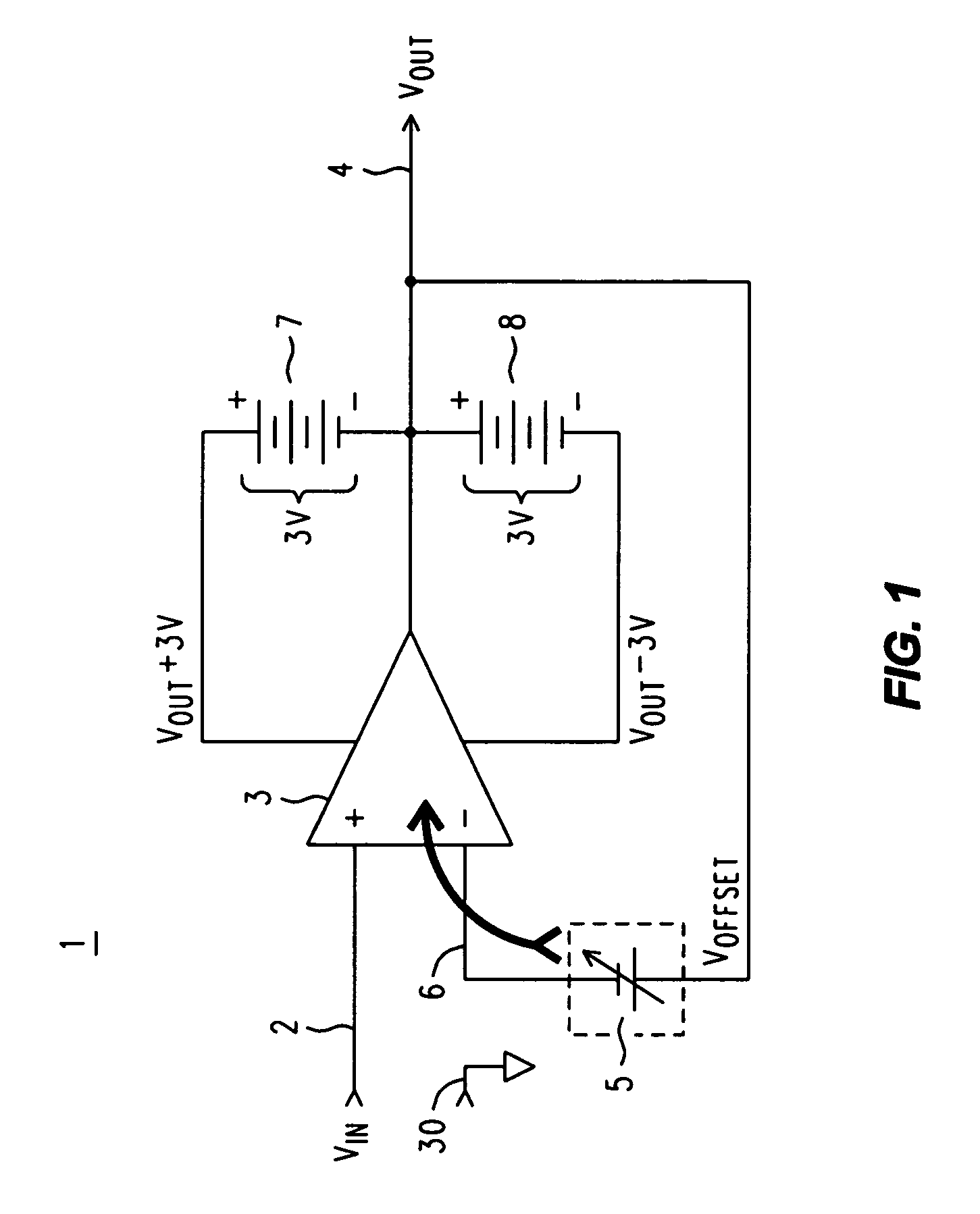Ultra high linearity amplifier
a high-linearity, amplifier technology, applied in differential amplifiers, amplifiers with semiconductor devices/discharge tubes, amplifier details, etc., can solve the problems of inability to achieve symmetrical tracking of power supplies, unmatched linearity that cannot be obtained by operating parts, etc., to improve linearity, improve linearity, and large output swing
- Summary
- Abstract
- Description
- Claims
- Application Information
AI Technical Summary
Problems solved by technology
Method used
Image
Examples
Embodiment Construction
[0012]Refer now to FIG. 1, wherein is shown a simplified equivalent circuit diagram 1 useful in appreciating how a large swing unity gain amplifier with extremely high linearity can be realized using a low voltage differential amplifier. A conventional low voltage swing differential amplifier 3 has the usual plus (+) and minus (−) inputs, to which an input voltage VIN 2 (which is with respect to a ground 30) is applied at the plus input. The minus input is connected to the output VOUT (which is to be used elsewhere for whatever reason the unity gain amplifier is there in the first place . . . ). The variable VOFFSET supply 5 represents the equivalent source associated with the CMR mechanism within the amplifier 3. Were it not for the non-linearity associated with CMR, changes in the DC output would be expected to exactly track changes in the DC input, micro volt for micro volt, as it were. AC operation follows naturally, up to the point where the amplifier's frequency response begin...
PUM
 Login to View More
Login to View More Abstract
Description
Claims
Application Information
 Login to View More
Login to View More - R&D
- Intellectual Property
- Life Sciences
- Materials
- Tech Scout
- Unparalleled Data Quality
- Higher Quality Content
- 60% Fewer Hallucinations
Browse by: Latest US Patents, China's latest patents, Technical Efficacy Thesaurus, Application Domain, Technology Topic, Popular Technical Reports.
© 2025 PatSnap. All rights reserved.Legal|Privacy policy|Modern Slavery Act Transparency Statement|Sitemap|About US| Contact US: help@patsnap.com



